Small simple and cheap DIY CNC
For some time I am facinated with home fabrication and in particular the posibilities of CNC machines. A couple of years ago I did build a machine with some stepper motors using the TurboCNC software. The machne had a number of problems and therefor I hardly used it. Recently I started with rebuilding the machine which is shown on this page. I will document the findings with the machine as time passes.
The first machine
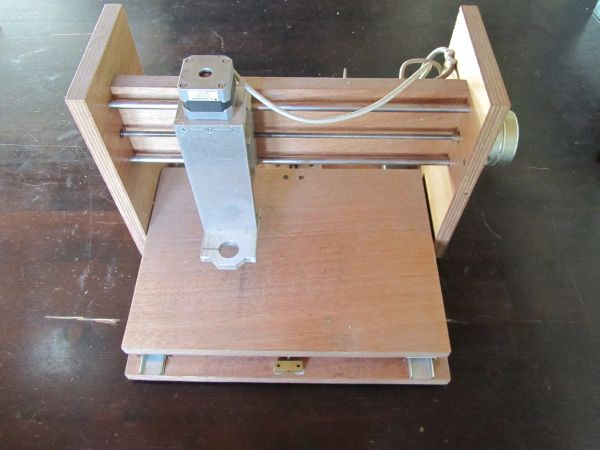
On the left a picture of the first machine. The x axes was build using drawer slides which actually worked fine. The y axes used 8 mm rods (outoff old printers) however they did bend when milling. Therefor the mill cuts were not very accurate. Furthermore the bushings on the rods were not properly alligned causing friction and stepper misses making the results not very predictable. The stepper motors were 5v 7.5 degree per step and not very strong, making things worse. The stepper driver was made using a ULN2003 for the Z axes and 4031 (NPN darlinton IC) salvaged outoff an old printer for the x and Y axes. The darlingtons of the stepper driver are directly adressed via a parallel port. This made the build of the electronics very simple. I used TurboCNC (MS DOS based) on an old laptop for controlling the stepper motors.
Machine nr 2 (the upgrade)
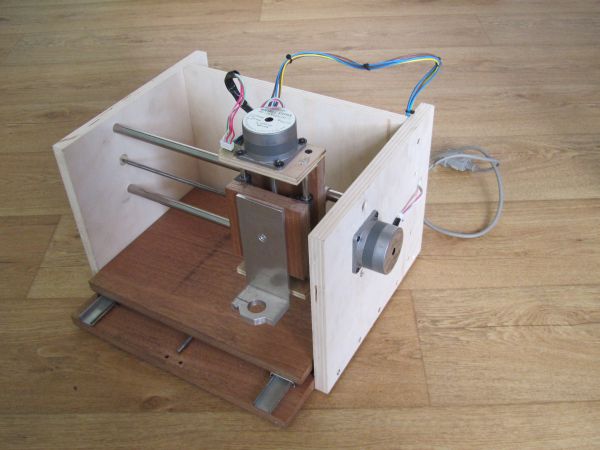
Because of the problems with the first build of the CNC machine, I decided to upgrade it to a more usefull machine. I found some 12v 1.8 degree per step stepper motors for 1€. In the previous machine the diameter of the rods was to thin and therfor I used rods of 14mm this time. Old printers are great sources for stepper motors, driver IC's, rods, and all kind of other components. I looked into the construction of the mantis 9 CNC machine which could solve my alligment problem. It uses parallel drilling for the rods into the wooden holders and glueing the guides with epoxy for best allignment.
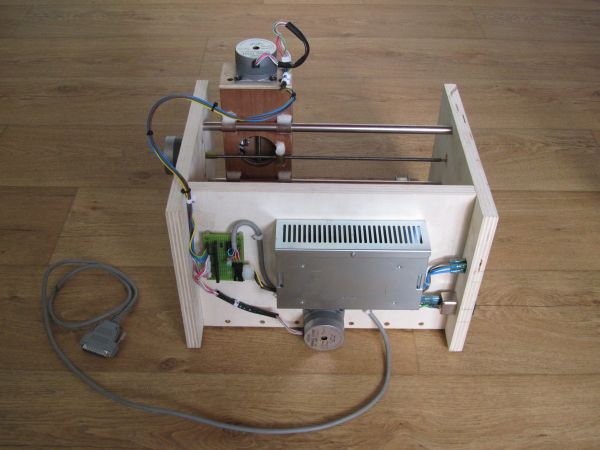
I could re-use the base of the machine with the drawer slides. I put stirdy 18mm plywood around the machine to fix the rods and to mount the new stepper motors. The spindels are made of 6mm threaded rod re-used from the original machine. 6mm rod has a thread distance of exactly 1 mm. Therefor the step displacement is 0.005mm. The stepper driver was adapted to drive the 12volt steppers and attached to a 12 volts switching power supply (I had laying around).
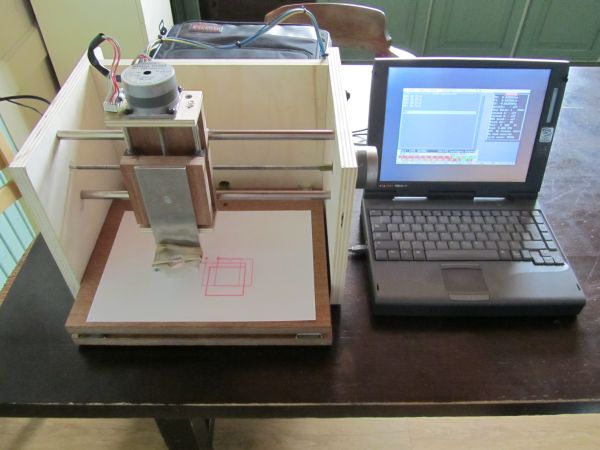
On the picture you can see the operational setup with the Laptop running TurboCNC in MS-DOS mode. It shows the tests done with a pencil to test the movement of the machine.
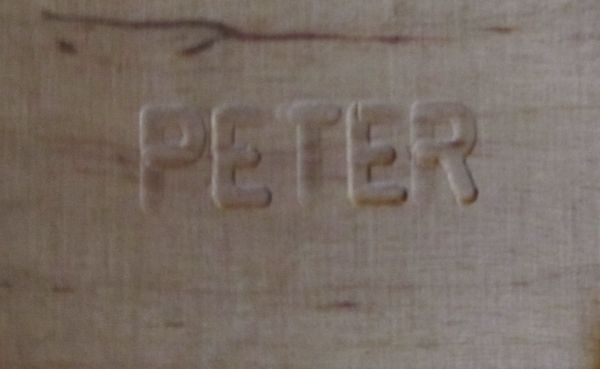
After using a pen and paper to test the behaviour and possible feed rates of the machine it was time to mount the Dremel to the motor mount. The first test, engraving plywood. Letters 10mm high, 2 mm mill.
- www.schaalbouw.nl/citroen © 2009 E.Paijmans
-

-

-
